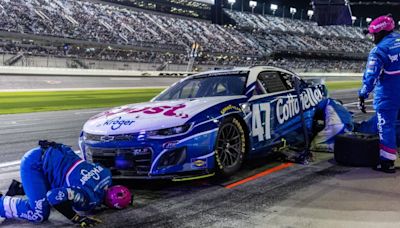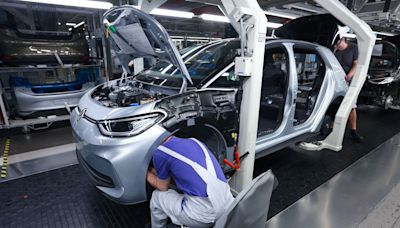Search results
Air enters a large duct at the front of the car, placed so that when the car is moving the entry point is in a high-pressure area and air is forced in. From there it goes to the heater, which warms it if required. Another common entry point is through grilles on top of the bonnet.
Outside Temperature: °F. Elapsed Time: minutes. Results. Inside Car Air Temperature: 119°F. Explanation. Scholars at the Stanford University School of Medicine performed a study in which they investigated the rate at which the interior temperature of a parked car increased during sunny days of temperatures between 72 and 96 degrees Fahrenheit.
- The Compressor
- The Condenser
- The Receiver-Dryer
- Thermal Expansion Valve
- Evaporator
The compressor is a pump driven by a belt attached to the engine's crankshaft. When the refrigerant is drawn into the compressor, it is in a low-pressure gaseous form. Once the gas is inside the pump, the compressor lives up to its name. The belt drives the pump, which puts the gas under pressure and forces it out to the condenser. Compressors cann...
The condenser is basically a radiator, and it serves the same purpose as the one in your home: to radiate heat out of the system. The refrigerant enters the condenser as a pressurized gas from the compressor. The process of pressurizing the gas and moving it to the condenser creates heat, but air flowing around the twisting tubes of the condenser c...
As it moves out of the condenser, the liquid goes through a little reservoir installed in the line. This receiver-dryer contains desiccants, small granules that attract water. You've seen packets of desiccants in shoeboxes, where they do the same thing: attract water from the air to keep new shoes fresh and ready for your feet. (They're usually lab...
Here, the system changes from the high-pressure side to the low-pressure side. If you were to touch this part of the system, you'd feel it change from hot to cold. The high-pressure liquid refrigerant flows from the receiver-dryer through the expansion valve, where it is allowed to expand. This expansion reduces the pressure on the refrigerant, so ...
This is where the magic happens. While all the other parts of the system are located in the enginecompartment, this one is in the cabin, usually above the footwell on the passenger side. It also looks like a radiator, with its coil of tubes and fins, but its job is to absorb heat rather than dissipate it. Refrigerant enters the evaporator coil as a...
Air gets into the interior when the heat is on in the same way AC works when your car is blowing cold air: a duct is placed in a high-pressure area, generally near the front of the car, where lots of air can flow in.
- (555)
- Understanding the AC system and components. Your car's air conditioning system works just like a refrigerator or your home air conditioning.
- Tools and safety. When performing any air conditioning system service you must have the proper tools - and exercise caution when using them.
- Performance check. Step 1: Park your vehicle on a level surface. Step 2: Place the wheel chocks around the driver side rear tire. Step 3: Open the hood.
- No air comes out of the dash vents. When performing your initial check, if air does not come from the center dash vents or if the air is coming from the wrong vents (such as the floor or windshield vents) then you have a problem with the interior climate control system.
People also ask
How does air enter a car?
How does AC work in a car?
How does a car duct work?
How does a car heater work?
Up in the Air: Directed by Jason Reitman. With George Clooney, Vera Farmiga, Anna Kendrick, Jason Bateman. Ryan's job is to travel around the country firing off people. When his boss hires Natalie, who proposes firing people via video conference, he tries to convince her that her method is a mistake.
The air conditioning system is made up of the following components: compressor, condenser, evaporator, orifice tube (or expansion valve), and an accumulator (or receiver-drier). Each of these components serves a different purpose.






